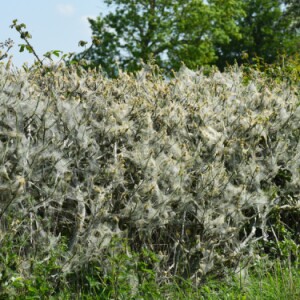Coming Through
Today I revisited the Spindle hedge where the Small Ermine Moths have laid their eggs, and where the caterpillars are preparing to go to the next stage - pupa - in their remarkable journey. They shed their skin several times in the development stages, feeding voraciously on the leaves of the tree that has been selected for them. I noted that the hedge, in this case Spindle, has been completely, and utterly devastated and has no leaves left whatsoever. (See Extra) The adjoining plants are Oak on the left and Hawthorn on the right. They are completely untouched and are thriving.
The caterpillars spin the webs that will protect them as they grow, and develop from pupa to adult moth.
I am fascinated by this phenomenon and cannot wait to see the result of this process, looking forward to hopefully getting some shots of the moths before they fly away, or get predated upon.
The Spindle tree is a mystery to me and I have researched it before posting these pictures. It is a deciduous tree and can grow up to 5 or 10 metres tall. It can grow for a hundred years and the leaves are attractive to aphids and their predators, including ladybird and lacewing. Also sparrows and other birds roost and feed in the branches of this important plant. It is attractive to pollinators and is in fact a hermaphrodite plant meaning its flowers produce both male and female parts, and the flowers produce brightly coloured fruits in winter.
Who knew? Not me, that's for sure.
Euonymus eruopaeus - remember that for your next pub quiz!


Comments
Sign in or get an account to comment.


